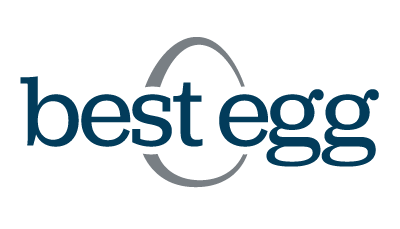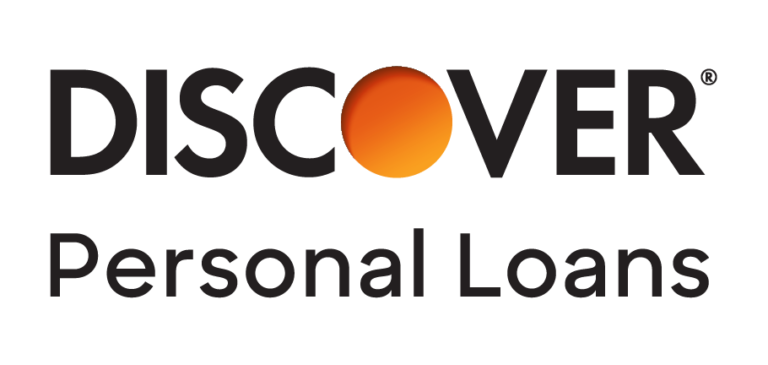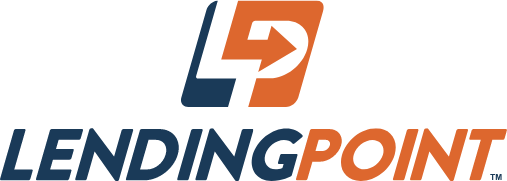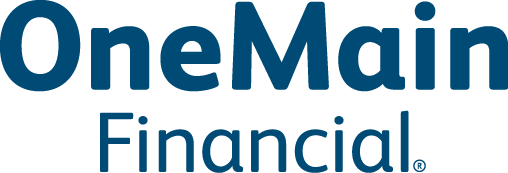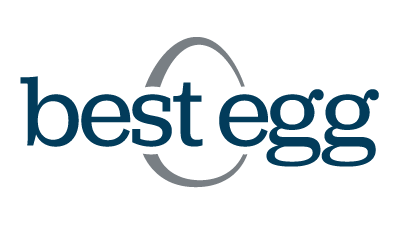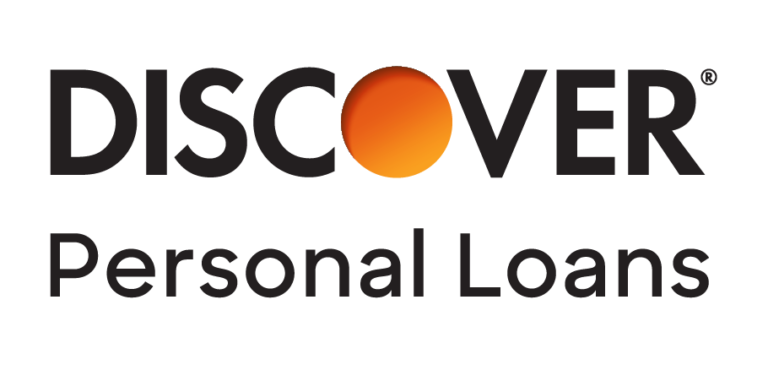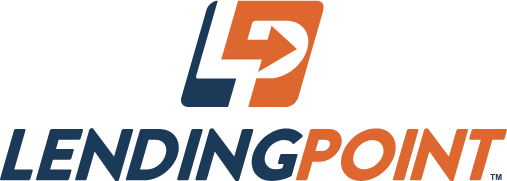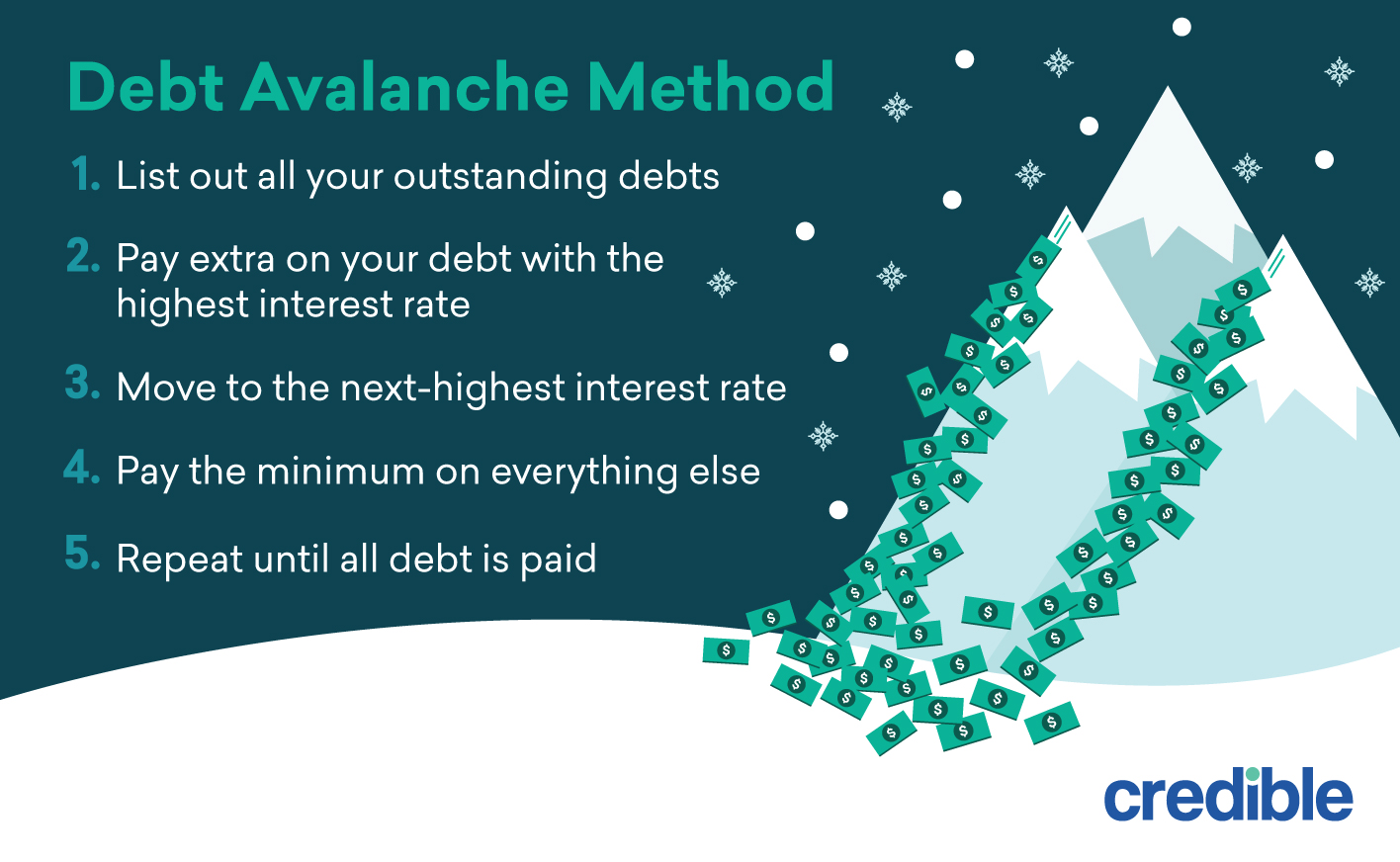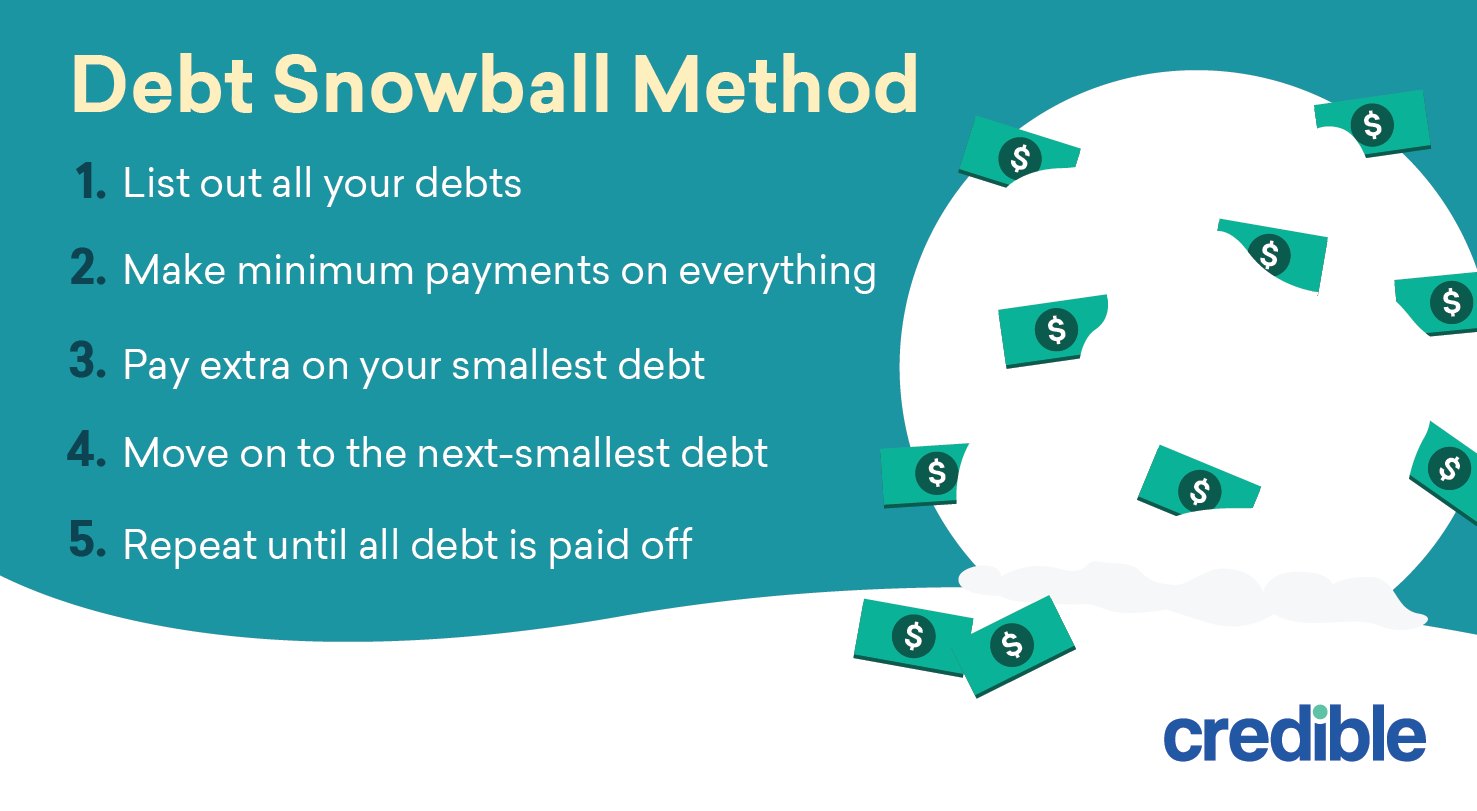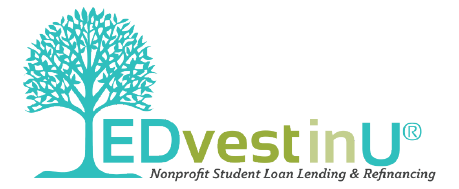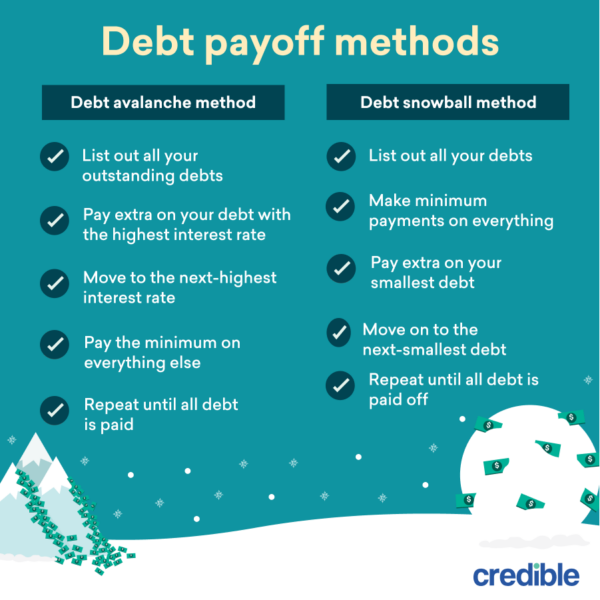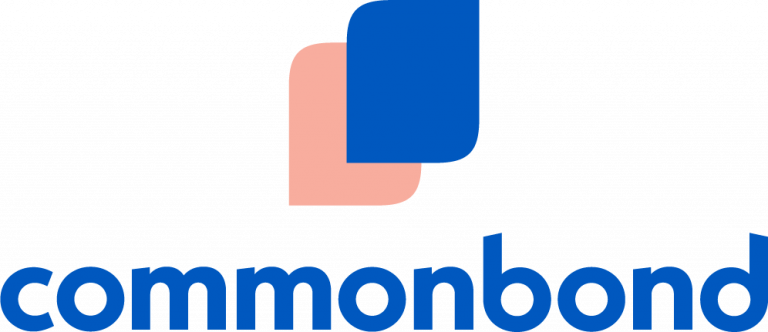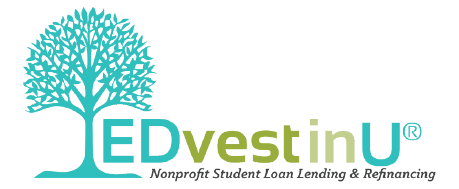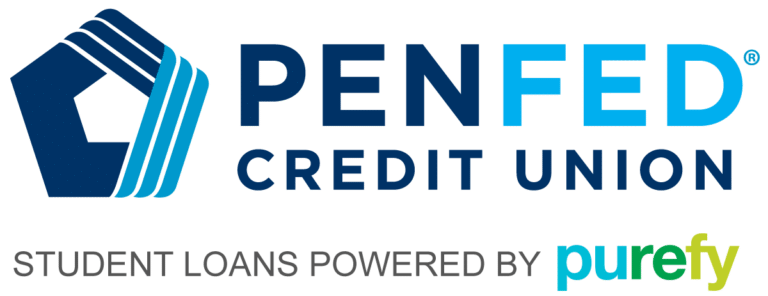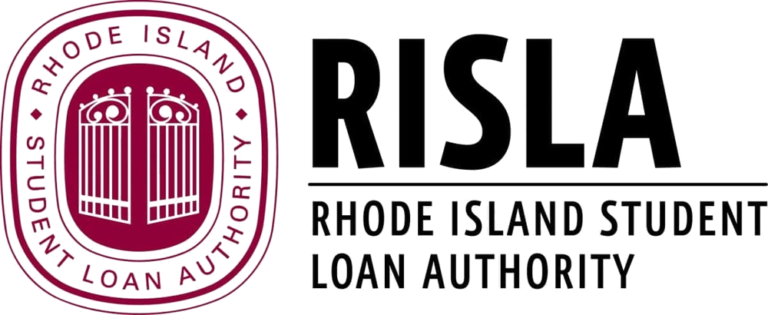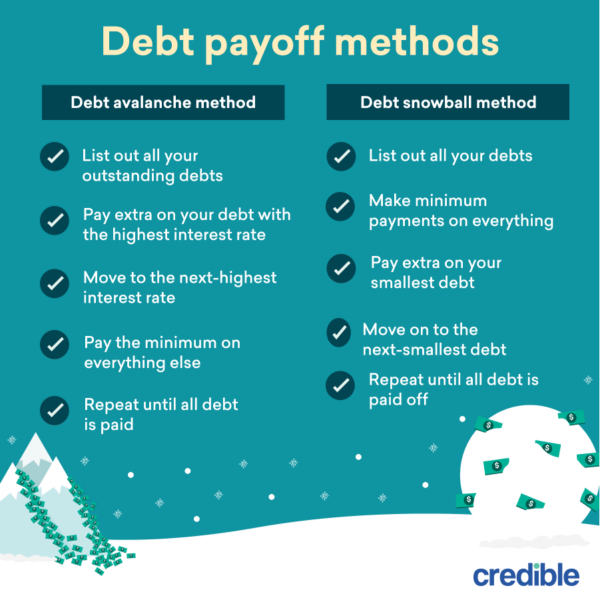Refinancing your student loans with a cosigner could improve your approval chances as well as possibly get you a lower interest rate than you’d get on your own.
However, you don’t have to refinance with a cosigner if you meet the lender’s underwriting criteria on your own.
If you’re wondering how to refinance student loans without a cosigner, here’s what you should know:
Best lenders for refinancing without a cosignerOther student loan refinancing lenders to considerHow to refinance student loans without a cosignerPros of not using a cosigner when refinancingCons of not using a cosigner when refinancingHow cosigner release worksFrequently asked questions about refinancing without a cosigner
Best lenders for refinancing without a cosigner
If you’re thinking about refinancing your student loans without a cosigner, it’s important to compare as many lenders as possible first. This way, you can find the right loan for your situation.
Keep in mind: You’ll generally need good to excellent credit to get approved for refinancing — especially if you don’t have a cosigner. A good credit score is usually considered to be 700 or higher.
There are also some lenders that offer student loan refinancing for bad credit. But these loans typically come with higher interest rates compared to good credit loans.
Here are Credible’s partner lenders that don’t require a cosigner for refinancing:
LenderFixed rates from (APR)Variable rates from (APR)Loan terms (years)Loan amountsOffer Cosigner Release?

Credible Rating>

Credible lender ratings are evaluated by our editorial team with the help of our loan operations team. The rating criteria for lenders encompass 78 data points spanning interest rates, loan terms, eligibility requirement transparency, repayment options, fees, discounts, customer service, cosigner options, and more. Read our full methodology.





View details>
4.54%+N/A10, 15, 20$7,500 up to $200,000
(larger balances require special approval)Yes, after 36 monthsFixed APR:
4.54%+Variable APR:
N/AMin. credit score:
Does not discloseLoan amount:
$7,500 up to $500,000Loan terms (years):
10, 15, 20Max. undergraduate loan balance:
$250,000 – $500,000Time to fund:
4 monthsRepayment options:
Immediate repayment, forbearance, loans discharged upon death or disabilityFees:
NoneDiscounts:
AutopayEligibility:
Must be a resident of KentuckyCustomer service:
PhoneSoft credit check:
NoCosigner release:
After 36 monthsLoan servicer:
Kentucky Higher Education Student Loan CorporationMax. graduate loan balance:
$250,000 – $500,000Credible Review:
Advantage Education Loan reviewOffers Parent PLUS Refinancing :
Yes

Credible Rating>

Credible lender ratings are evaluated by our editorial team with the help of our loan operations team. The rating criteria for lenders encompass 78 data points spanning interest rates, loan terms, eligibility requirement transparency, repayment options, fees, discounts, customer service, cosigner options, and more. Read our full methodology.





View details>
2.15%+
1.87%+5, 7, 10, 15, 20$10,000 up to $250,000
(depending on degree)NoFixed APR:
2.15%+Variable APR:
N/AMin. credit score:
Does not discloseLoan amount:
$10,000 to $400,000Loan terms (years):
5, 7, 10, 15, 20Repayment options:
Military deferment, forbearanceFees:
Late feeDiscounts:
AutopayEligibility:
Must have a credit score of at least 720, a minimum income of $60,000, and must be a resident of TexasCustomer service:
Email, phoneSoft credit check:
Does not discloseCosigner release:
NoLoan servicer:
Firstmark ServicesMax. Undergraduate Loan Balance:
$100,000 – $149,000Max. Graduate Loan Balance:
$200,000 – $400,000Offers Parent PLUS Refinancing:
Does not disclose

Credible Rating>

Credible lender ratings are evaluated by our editorial team with the help of our loan operations team. The rating criteria for lenders encompass 78 data points spanning interest rates, loan terms, eligibility requirement transparency, repayment options, fees, discounts, customer service, cosigner options, and more. Read our full methodology.





View details>
2.44%+1
2.24%+15, 7, 10, 15, 20$10,000 to $500,000
(depending on degree and loan type)Yes, after 36 monthsFixed APR:
2.44%+1Variable APR:
2.24%+1Min. credit score:
Does not discloseLoan amount:
$10,000 to $750,000Loan terms (years):
5, 7, 10, 15, 20Repayment options:
Immediate repayment, academic deferment, military deferment, forbearance, loans discharged upon death or disabilityFees:
Late feeDiscounts:
Autopay, loyaltyEligibility:
Must be a U.S. citizen or permanent resident and have at least $10,000 in student loansCustomer service:
Email, phone, chatSoft credit check:
YesCosigner release:
After 24 to 36 monthsLoan servicer:
Firstmark ServicesMax. Undergraduate Loan Balance:
$100,000 to $149,000Max. Graduate Loan Balance:
Less than $150,000Offers Parent PLUS Refinancing:
Yes

Credible Rating>

Credible lender ratings are evaluated by our editorial team with the help of our loan operations team. The rating criteria for lenders encompass 78 data points spanning interest rates, loan terms, eligibility requirement transparency, repayment options, fees, discounts, customer service, cosigner options, and more. Read our full methodology.





View details>
2.99%+2
2.94%+25, 7, 10, 12, 15, 20$5,000 to $300,000
(depending on degree type)Yes, after 24 monthsFixed APR:
2.99%+2Variable APR:
2.94%+2Min. credit score:
Does not discloseLoan amount:
$5,000 to $300,000Loan terms (years):
5, 7, 10, 12, 15, 20Repayment options:
Military deferment, forbearance, loans discharged upon death or disabilityFees:
Late feeDiscounts:
AutopayEligibility:
All states except for MECustomer service:
Email, phone, chatSoft credit check:
YesCosigner release:
After 24 to 36 monthsLoan servicer:
College Ave Servicing LLCMax. Undergraduate Loan Balance:
$100,000 to $149,000Max. Graduate Loan Balance:
Less than $300,000Offers Parent PLUS Refinancing:
Yes
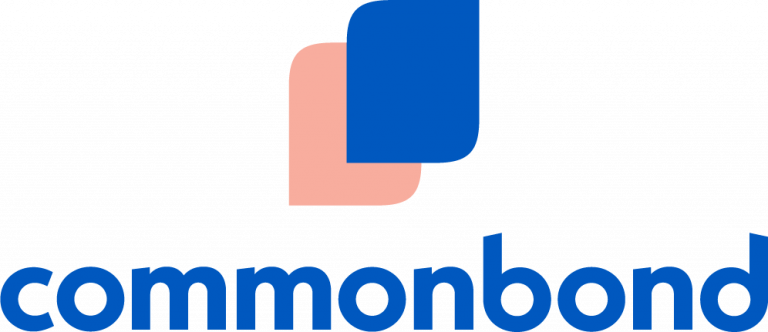
Credible Rating>

Credible lender ratings are evaluated by our editorial team with the help of our loan operations team. The rating criteria for lenders encompass 78 data points spanning interest rates, loan terms, eligibility requirement transparency, repayment options, fees, discounts, customer service, cosigner options, and more. Read our full methodology.





View details>
2.16%+
2.11%+5, 7, 10, 15, 20$5,000 to $500,000Yes, after 36 monthsFixed rate:
2.44%+1Variable rate:
2.24%+1Min. credit score:
680Loan amount:
$5,000 to $500,000Cosigner release:
YesLoan terms (years):
5, 7, 10, 15, 20Repayment options:
Academic deferment, forbearance, loans discharged upon death or disabilityFees:
Late feeDiscounts:
AutopayEligibility:
Available in all states, except MS and NVCustomer service:
Email, phone, chatSoft credit check:
YesLoan servicer:
FirstMarkMax. undergraduate loan balance:
$500,000Max. graduate loan balance:
$500,000Offers Parent PLUS refinancing:
YesMin. income:
$65,000 (for 15- and 20-year products)

Credible Rating>

Credible lender ratings are evaluated by our editorial team with the help of our loan operations team. The rating criteria for lenders encompass 78 data points spanning interest rates, loan terms, eligibility requirement transparency, repayment options, fees, discounts, customer service, cosigner options, and more. Read our full methodology.





View details>
1.8%+5
1.8%+55, 10, 15, 20$1,000 to $250,000Yes, after 36 monthsFixed APR:
1.8%+5Variable APR:
1.8%+5Min. credit score:
700Loan amount:
$7,500 to $200,000Loan terms (years):
5, 10, 15, 20Repayment options:
Immediate repayment, academic deferment, forbearance, loans discharged upon death or disabilityFees:
NoneDiscounts:
AutopayEligibility:
Must be a U.S. citizen or permanent resident and submit two personal referencesCustomer service:
Email, phoneSoft credit check:
YesCosigner release:
After 36 monthsLoan servicer:
Granite State Management & Resources (GSM&R)Max. Undergraduate Loan Balance:
$150,000 to $249,000Max. Graduate Loan Balance:
$150,000 to $199,000Offers Parent PLUS Refinancing :
Yes

Credible Rating>

Credible lender ratings are evaluated by our editorial team with the help of our loan operations team. The rating criteria for lenders encompass 78 data points spanning interest rates, loan terms, eligibility requirement transparency, repayment options, fees, discounts, customer service, cosigner options, and more. Read our full methodology.





View details>
2.47%+3
2.39%+35, 7, 10, 12, 15, 20Minimum of $15,000NoFixed APR:
2.47%+3Variable APR:
2.39%+3Min. credit score:
680Loan amount:
No maximumLoan terms (years):
5, 7, 10, 12, 15, 20Repayment options:
ForbearanceFees:
NoneDiscounts:
NoneEligibility:
Must be a U.S. citizen or permanent resident, have at least $15,000 in student loan debt, and have a bachelor’s degree or higher from an approved schoolCustomer service:
Email, phoneSoft credit check:
YesCosigner release:
NoLoan servicer:
MohelaMax. Undergraduate Loan Balance:
No maximumMax. Graduate Loan Balance:
No maximumOffers Parent PLUS Refinancing:
Yes

Credible Rating>

Credible lender ratings are evaluated by our editorial team with the help of our loan operations team. The rating criteria for lenders encompass 78 data points spanning interest rates, loan terms, eligibility requirement transparency, repayment options, fees, discounts, customer service, cosigner options, and more. Read our full methodology.





View details>
3.47%+4
2.44%+45, 10, 15, 20$5,000 to $250,000Yes, after 48 months of on-time paymentsFixed APR:
3.47%+4Variable APR:
2.44%+4Min. credit score:
670Loan amount:
$5,000 to $250,000Loan terms (years):
5, 10, 15, 20Repayment options:
Academic deferment, military deferment, forbearanceFees:
Late feeDiscounts:
AutopayEligibility:
Must be U.S. citizen or permanent residentCustomer service:
Email, phone, chatSoft credit check:
YesCosigner release:
YesMax undergraduate loan balance:
$250,000Max graduate loan balance:
$250,000Offers Parent PLUS refinancing:
Yes

Credible Rating>

Credible lender ratings are evaluated by our editorial team with the help of our loan operations team. The rating criteria for lenders encompass 78 data points spanning interest rates, loan terms, eligibility requirement transparency, repayment options, fees, discounts, customer service, cosigner options, and more. Read our full methodology.





View details>
2.24%+7N/A5, 7, 10, 12, 15, 20Up to $300,000Yes, after 24 monthsFixed APR:
2.24%+7Variable APR:
N/AMin. credit score:
670Loan amount:
Up to $300,000Loan terms (years):
5, 7, 10, 15, 20Time to fund:
Usually one business dayRepayment options:
Academic deferral, military deferral, forbearance, death/disability dischargeFees:
NoneDiscounts:
AutopayEligibility:
Available in all 50 statesCustomer service:
Email, phoneSoft credit check:
YesCosigner release:
After 24 monthsMax. undergraduate loan balance:
$300,000Max. graduate balance:
$300,000Offers Parent PLUS loans:
YesMin. income:
None

Credible Rating>

Credible lender ratings are evaluated by our editorial team with the help of our loan operations team. The rating criteria for lenders encompass 78 data points spanning interest rates, loan terms, eligibility requirement transparency, repayment options, fees, discounts, customer service, cosigner options, and more. Read our full methodology.





View details>
3.05%+
3.05%+7, 10, 15$10,000 up to the total amount of qualified education debt NoFixed APR:
3.05%+Variable APR:
3.05%+Min. credit score:
670Loan amount:
$10,000 up to the total amountLoan terms (years):
7, 10, 15Repayment options:
Military deferment, loans discharged upon death or disabilityFees:
NoneDiscounts:
NoneEligibility:
Must be a U.S. citizen or permanent resident and have at least $10,000 in student loansCustomer service:
Email, phoneSoft credit check:
YesCosigner release:
NoLoan servicer:
AESMax. Undergraduate Loan Balance:
No maximumMax. Gradaute Loan Balance:
No maximumOffers Parent PLUS Refinancing:
Yes

Credible Rating>

Credible lender ratings are evaluated by our editorial team with the help of our loan operations team. The rating criteria for lenders encompass 78 data points spanning interest rates, loan terms, eligibility requirement transparency, repayment options, fees, discounts, customer service, cosigner options, and more. Read our full methodology.





View details>
2.89%+N/A5, 8, 12, 15$7,500 to $300,000Yes, after 12 monthsFixed APR:
2.89%+Variable APR:
N/AMin. credit score:
670Loan amount:
$7,500 to $300,000Loan terms (years):
5, 8, 12, 15Repayment options:
Does not discloseFees:
NoneDiscounts:
NoneEligibility:
Must be a U.S. citizen and have and at least $7,500 in student loansCustomer service:
Email, phone, chatSoft credit check:
YesCosigner release:
After 12 monthsLoan servicer:
PenFedMax. Undergraduate Loan Balance:
$300,000Max. Graduate Loan Balance:
$300,000Offers Parent PLUS Refinancing:
Yes

Credible Rating>

Credible lender ratings are evaluated by our editorial team with the help of our loan operations team. The rating criteria for lenders encompass 78 data points spanning interest rates, loan terms, eligibility requirement transparency, repayment options, fees, discounts, customer service, cosigner options, and more. Read our full methodology.





View details>
3.29%+N/A5, 10, 15$7,500 up to $250,000
(depending on highest degree earned) NoFixed APR:
3.29%+Variable APR:
N/AMin. credit score:
680Loan amount:
$7,500 to $250,000Loan terms (years):
5, 10, 15Repayment options:
Academic deferment, military deferment, forbearance, loans discharged upon death or disabilityFees:
NoneDiscounts:
AutopayEligibility:
Available in all 50 states; must also have at least $7,500 in student loans and a minimum income of $40,000Customer service:
Email, phoneSoft credit check:
Does not discloseCosigner release:
NoLoan servicer:
Rhode Island Student Loan AuthorityMax. Undergraduate Loan Balance:
$150,000 – $249,000Max. Graduate Loan Balance:
$200,000 – $249,000Offers Parent PLUS Refinancing:
Yes

Credible Rating>

Credible lender ratings are evaluated by our editorial team with the help of our loan operations team. The rating criteria for lenders encompass 78 data points spanning interest rates, loan terms, eligibility requirement transparency, repayment options, fees, discounts, customer service, cosigner options, and more. Read our full methodology.





View details>
2.49%+6
2.25%+65, 7, 10, 15, 20$5,000 up to the full balance of your qualified education loans NoFixed APR:
2.49%+6Variable APR:
2.25%+6Min. credit score:
Does not discloseLoan amount:
$5,000 up to the full balanceLoan terms (years):
5, 7, 10, 15, 20Repayment options:
Academic deferment, military defermentFees:
NoneDiscounts:
Autopay, loyaltyEligibility:
Available in all 50 statesCustomer service:
Email, phone, chatSoft credit check:
YesCosigner release:
NoMax undergraduate loan balance:
No maximumMax graduate loan balance:
No maximumOffers Parent PLUS refinancing:
YesAll APRs reflect autopay and loyalty discounts where available | 1Citizens Disclosures | 2College Ave Disclosures | 5EDvestinU Disclosures | 3 ELFI Disclosures | 4INvestEd Disclosures | 7ISL Education Lending Disclosures | 6SoFi Disclosures
Compare personalized rates from multiple lenders without affecting your credit score. 100% free!
Compare Now
Trustpilot
dvantage
Best for: Parents who want to transfer PLUS Loans to their children
With Advantage, you can refinance loan amounts from $7,500 to $500,000 (depending on your degree and loan type) with repayment terms from 10 to 20 years.
Advantage is also one of the few lenders that allow parents to refinance Parent PLUS Loans into their child’s name.

3.0
Credible rating>

Credible lender ratings are evaluated by our editorial team with the help of our loan operations team. The rating criteria for lenders encompass 78 data points spanning interest rates, loan terms, eligibility requirement transparency, repayment options, fees, discounts, customer service, cosigner options, and more. Read our full methodology.





Rates and terms





Fees and Discounts





Customer Experience





Advantage Education Loan Student Loan Refinancing

Fixed APR

Lowest fixed rate available from this lender
4.54%+

Variable APR

Lowest variable rate available from this lenderN/A

Min. credit score

Minimum credit score needed to qualifyDoes not disclose

Loan amount

Range needed to refinance with this lender$7,500 up to $500,000
Does refinancing make sense for you?
Compare offers from top refinancing lenders to determine your actual savings.
Check Personalized Rates>Checking rates won’t affect your credit scoreView DetailsFixed APR:
4.54%+Variable APR: N/AMin. credit score: Does not discloseLoan amount: $7,500 up to $500,000Loan terms (years): 10, 15, 20Max. undergraduate loan balance: $250,000 – $500,000Time to fund: 4 monthsRepayment options: Immediate repayment, forbearance, loans discharged upon death or disabilityFees: NoneDiscounts: AutopayEligibility: Must be a resident of KentuckyCustomer service: PhoneSoft credit check: NoCosigner release: After 36 monthsLoan servicer: Kentucky Higher Education Student Loan CorporationMax. graduate loan balance: $250,000 – $500,000Credible Review: Advantage Education Loan reviewOffers Parent PLUS Refinancing : Yes
Pros
0.25% autopay discountCan transfer Parent PLUS Loans to studentGraduated repayment plan offered
Cons
$18,000 minimum income requirementDoesn’t offer variable ratesLong cosigner release period (36 months)
Learn More: Best Companies to Refinance Parent Plus Loans
Brazos
Best for: Borrowers who live in Texas
If you’re a Texas resident, Brazos could be a good option for refinancing. With Brazos, you can refinance $10,000 to $400,000 (depending on your degree) with terms from five to 20 years.

4.4
Credible rating>

Credible lender ratings are evaluated by our editorial team with the help of our loan operations team. The rating criteria for lenders encompass 78 data points spanning interest rates, loan terms, eligibility requirement transparency, repayment options, fees, discounts, customer service, cosigner options, and more. Read our full methodology.





Rates and terms





Fees and Discounts





Customer Experience





Brazos Student Loan Refinancing

Fixed APR

Lowest fixed rate available from this lender
2.15%+

Variable APR

Lowest variable rate available from this lenderN/A

Min. credit score

Minimum credit score needed to qualifyDoes not disclose

Loan amount

Range needed to refinance with this lender$10,000 to $400,000
Does refinancing make sense for you?
Compare offers from top refinancing lenders to determine your actual savings.
Check Personalized Rates>Checking rates won’t affect your credit scoreView DetailsFixed APR:
2.15%+Variable APR: N/AMin. credit score: Does not discloseLoan amount: $10,000 to $400,000Loan terms (years): 5, 7, 10, 15, 20Repayment options: Military deferment, forbearanceFees: Late feeDiscounts: AutopayEligibility: Must have a credit score of at least 720, a minimum income of $60,000, and must be a resident of TexasCustomer service: Email, phoneSoft credit check: Does not discloseCosigner release: NoLoan servicer: Firstmark ServicesMax. Undergraduate Loan Balance: $100,000 – $149,000Max. Graduate Loan Balance: $200,000 – $400,000Offers Parent PLUS Refinancing: Does not disclose
Pros
0.25% autopay discountVariety of repayment terms offeredForbearance options available for economic hardship, active-duty military service, or natural disaster
Cons
Only available in TexasCould be hard to qualify if you don’t have good credit$60,000 minimum income requirement without a cosigner
Citizens
Best for: Borrowers who already have an account with Citizens
With Citizens, you can refinance loan amounts from $10,000 to $750,000 (depending on your degree and loan type) with terms from five to 20 years.
Additionally, if you already have an account with Citizens, you could get a 0.25% rate discount — plus another 0.25% off your rate if you sign up for autopay.

4.7
Credible rating>

Credible lender ratings are evaluated by our editorial team with the help of our loan operations team. The rating criteria for lenders encompass 78 data points spanning interest rates, loan terms, eligibility requirement transparency, repayment options, fees, discounts, customer service, cosigner options, and more. Read our full methodology.





Rates and terms





Fees and Discounts





Customer Experience





Citizens Student Loan Refinancing

Fixed APR

Lowest fixed rate available from this lender
2.44%+1

Variable APR

Lowest variable rate available from this lender
2.24%+1

Min. credit score

Minimum credit score needed to qualifyDoes not disclose

Loan amount

Range needed to refinance with this lender$10,000 to $750,000
Does refinancing make sense for you?
Compare offers from top refinancing lenders to determine your actual savings.
Check Personalized Rates>Checking rates won’t affect your credit scoreView DetailsFixed APR:
2.44%+1Variable APR:
2.24%+1Min. credit score: Does not discloseLoan amount: $10,000 to $750,000Loan terms (years): 5, 7, 10, 15, 20Repayment options: Immediate repayment, academic deferment, military deferment, forbearance, loans discharged upon death or disabilityFees: Late feeDiscounts: Autopay, loyaltyEligibility: Must be a U.S. citizen or permanent resident and have at least $10,000 in student loansCustomer service: Email, phone, chatSoft credit check: YesCosigner release: After 24 to 36 monthsLoan servicer: Firstmark ServicesMax. Undergraduate Loan Balance: $100,000 to $149,000Max. Graduate Loan Balance: Less than $150,000Offers Parent PLUS Refinancing: Yes
Pros
0.25% autopay discount0.25% loyalty discountDegree not required
Cons
Doesn’t disclose minimum credit score or income requirementsLong cosigner release period (36 months)Cosigner release not available on the Education Refinance Loan for Parents
Check Out: Can You Refinance a Student Loan to a 30-Year Term?
College Ave
Best for: Variety of repayment terms
College Ave offers refinancing on loan amounts from $5,000 to $300,000 (depending on degree type). Additionally, borrowers can choose between 16 repayment terms ranging from five to 20 years, making it easier to fit your payments into your budget.

4.4
Credible rating>

Credible lender ratings are evaluated by our editorial team with the help of our loan operations team. The rating criteria for lenders encompass 78 data points spanning interest rates, loan terms, eligibility requirement transparency, repayment options, fees, discounts, customer service, cosigner options, and more. Read our full methodology.





Rates and terms





Fees and Discounts





Customer Experience





College Ave Student Loan Refinancing

Fixed APR

Lowest fixed rate available from this lender
2.99%+2

Variable APR

Lowest variable rate available from this lender
2.94%+2

Min. credit score

Minimum credit score needed to qualify Does not disclose

Loan amount

Range needed to refinance with this lender$5,000 to $300,000
Does refinancing make sense for you?
Compare offers from top refinancing lenders to determine your actual savings.
Check Personalized Rates>Checking rates won’t affect your credit scoreView DetailsFixed APR:
2.99%+2Variable APR:
2.94%+2Min. credit score: Does not discloseLoan amount: $5,000 to $300,000Loan terms (years): 5, 7, 10, 12, 15, 20Repayment options: Military deferment, forbearance, loans discharged upon death or disabilityFees: Late feeDiscounts: AutopayEligibility: All states except for MECustomer service: Email, phone, chatSoft credit check: YesCosigner release: After 24 to 36 monthsLoan servicer: College Ave Servicing LLCMax. Undergraduate Loan Balance: $100,000 to $149,000Max. Graduate Loan Balance: Less than $300,000Offers Parent PLUS Refinancing: Yes
Pros
0.25% autopay discountVariety of repayment terms availableCosigner release offered after 24 months of consecutive, on-time payments
Cons
Doesn’t disclose minimum credit score or income requirementsUndergraduate or graduate degree requiredParents can’t transfer Parent PLUS Loans to student
CommonBond
Best for: Borrowers who plan to pay off their loan quickly
With CommonBond, you can refinance loan amounts from $5,000 to $500,000 with repayment terms from five to 20 years.
CommonBond also offers a unique hybrid loan option that starts with a fixed rate for the first half of the repayment term before switching to a variable rate — this could help you save money if you plan to pay off your loan quickly.
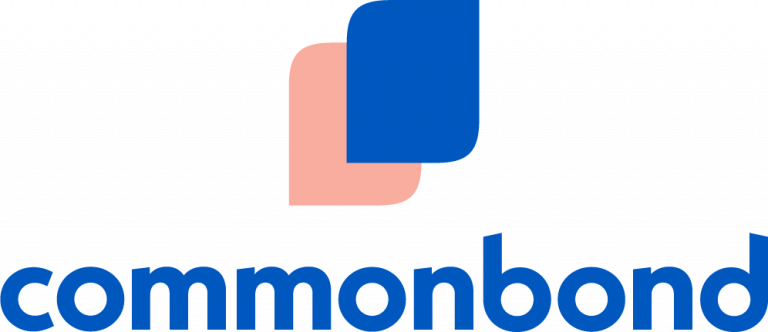
4.5
Credible rating>

Credible lender ratings are evaluated by our editorial team with the help of our loan operations team. The rating criteria for lenders encompass 78 data points spanning interest rates, loan terms, eligibility requirement transparency, repayment options, fees, discounts, customer service, cosigner options, and more. Read our full methodology.





Rates and terms





Fees and Discounts





Customer Experience





CommonBond Student Loan Refinancing

Fixed rate

Lowest fixed rate available from this lender
2.44%+1

Min. credit score

Minimum credit score needed to qualify680

Loan amount

Range needed to refinance with this lender$5,000 to $500,000
Does refinancing make sense for you?
Compare offers from top refinancing lenders to determine your actual savings.
Check Personalized Rates>Checking rates won’t affect your credit scoreView DetailsFixed rate:
2.44%+1Variable rate:
2.24%+1Min. credit score: 680Loan amount: $5,000 to $500,000Cosigner release: YesLoan terms (years): 5, 7, 10, 15, 20Repayment options: Academic deferment, forbearance, loans discharged upon death or disabilityFees: Late feeDiscounts: AutopayEligibility: Available in all states, except MS and NVCustomer service: Email, phone, chatSoft credit check: YesLoan servicer: FirstMarkMax. undergraduate loan balance: $500,000Max. graduate loan balance: $500,000Offers Parent PLUS refinancing: YesMin. income: $65,000 (for 15- and 20-year products)
Pros
Offers a hybrid loan option that starts with a fixed rate for the first half of the repayment term before switching to a variable rate0.25% autopay discountUp to 24 months of forbearance available over the life of the loan
Cons
Must be have graduated from an eligible Title IV accredited university or graduate program within CommonBond’s network$65,000 minimum income requirement for 15- and 20-year productsNot available in Mississippi or Nevada
Learn More: Debt-to-Income Ratio for Refinancing Student Loans
EDvestinU
Best for: Borrowers who didn’t graduate
EDvestinU offers refinancing on loan amounts from $7,500 to $200,000 with terms from five to 20 years. Unlike many lenders, EDvestinU doesn’t require borrowers to have graduated to be eligible.

3.8
Credible rating>

Credible lender ratings are evaluated by our editorial team with the help of our loan operations team. The rating criteria for lenders encompass 78 data points spanning interest rates, loan terms, eligibility requirement transparency, repayment options, fees, discounts, customer service, cosigner options, and more. Read our full methodology.





Rates and terms





Fees and Discounts





Customer Experience





EDvestinU Student Loan Refinancing

Fixed APR

Lowest fixed rate available from this lender
1.8%+5

Variable APR

Lowest variable rate available from this lender
1.8%+5

Min. credit score

Minimum credit score needed to qualify700

Loan amount

Range needed to refinance with this lender$7,500 to $200,000
Does refinancing make sense for you?
Compare offers from top refinancing lenders to determine your actual savings.
Check Personalized Rates>Does refinancing make sense for you? Compare offers from top refinancing lenders to determine your actual savings.View DetailsFixed APR:
1.8%+5Variable APR:
1.8%+5Min. credit score: 700Loan amount: $7,500 to $200,000Loan terms (years): 5, 10, 15, 20Repayment options: Immediate repayment, academic deferment, forbearance, loans discharged upon death or disabilityFees: NoneDiscounts: AutopayEligibility: Must be a U.S. citizen or permanent resident and submit two personal referencesCustomer service: Email, phoneSoft credit check: YesCosigner release: After 36 monthsLoan servicer: Granite State Management & Resources (GSM&R)Max. Undergraduate Loan Balance: $150,000 to $249,000Max. Graduate Loan Balance: $150,000 to $199,000Offers Parent PLUS Refinancing : Yes
Pros
0.25% autopay discountDegree not requiredNo application, origination, or disbursement fees
Cons
Could be hard to qualify if you don’t have good creditLong cosigner release period (36 months)$30,000 to $50,000 minimum income requirement (depending on loan amount)
ELFI
Best for: Borrowers with high loan balances
Education Loan Finance (ELFI) doesn’t have a maximum loan amount — you just need at least $15,000 in student loans to refinance. You can choose between repayment terms from five to 20 years — though keep in mind that 15- and 20-year terms aren’t available for parent borrowers.

4.4
Credible rating>

Credible lender ratings are evaluated by our editorial team with the help of our loan operations team. The rating criteria for lenders encompass 78 data points spanning interest rates, loan terms, eligibility requirement transparency, repayment options, fees, discounts, customer service, cosigner options, and more. Read our full methodology.





Rates and terms





Fees and Discounts





Customer Experience





Education Loan Finance Student Loan Refinancing

Fixed APR

Lowest fixed rate available from this lender
2.47%+3

Variable APR

Lowest variable rate available from this lender
2.39%+3

Min. credit score

Minimum credit score needed to qualify680

Loan amount

Range needed to refinance with this lenderNo maximum
Does refinancing make sense for you?
Compare offers from top refinancing lenders to determine your actual savings.
Check Personalized Rates>Checking rates won’t affect your credit scoreView DetailsFixed APR:
2.47%+3Variable APR:
2.39%+3Min. credit score: 680Loan amount: No maximumLoan terms (years): 5, 7, 10, 12, 15, 20Repayment options: ForbearanceFees: NoneDiscounts: NoneEligibility: Must be a U.S. citizen or permanent resident, have at least $15,000 in student loan debt, and have a bachelor’s degree or higher from an approved schoolCustomer service: Email, phoneSoft credit check: YesCosigner release: NoLoan servicer: MohelaMax. Undergraduate Loan Balance: No maximumMax. Graduate Loan Balance: No maximumOffers Parent PLUS Refinancing: Yes
Pros
No maximum loan amountVariable rates capped at 9.95% APRUp to 12 months of forbearance available to borrowers facing financial hardship
Cons
Must have at least $15,000 to refinanceCosigner release not offered$35,000 minimum income requirement
Check Out: How to Pay Off $30,000 in Student Loans
INvestEd
Best for: Borrowers who might need access to forbearance
With INvestEd, you can refinance $5,000 to $250,000 with terms from five to 20 years. Additionally, borrowers can access up to 24 months of forbearance over the life of the loan, which could be helpful if you experience financial hardship or unexpected circumstances.

3.9
Credible rating>

Credible lender ratings are evaluated by our editorial team with the help of our loan operations team. The rating criteria for lenders encompass 78 data points spanning interest rates, loan terms, eligibility requirement transparency, repayment options, fees, discounts, customer service, cosigner options, and more. Read our full methodology.





Rates and terms





Fees and Discounts





Customer Experience





INvestEd Student Loan Refinancing

Fixed APR

Lowest fixed rate available from this lender
3.47%+4

Variable APR

Lowest variable rate available from this lender
2.44%+4

Min. credit score

Minimum credit score needed to qualify670

Loan amount

Range needed to refinance with this lender$5,000 to $250,000
Does refinancing make sense for you?
Compare offers from top refinancing lenders to determine your actual savings.
Check Personalized Rates>Checking rates won’t affect your credit scoreView DetailsFixed APR:
3.47%+4Variable APR:
2.44%+4Min. credit score: 670Loan amount: $5,000 to $250,000Loan terms (years): 5, 10, 15, 20Repayment options: Academic deferment, military deferment, forbearanceFees: Late feeDiscounts: AutopayEligibility: Must be U.S. citizen or permanent residentCustomer service: Email, phone, chatSoft credit check: YesCosigner release: YesMax undergraduate loan balance: $250,000Max graduate loan balance: $250,000Offers Parent PLUS refinancing: Yes
Pros
0.25% autopay discountUp to 24 months of forbearance available over the life of the loanDegree not required
Cons
Charges late and returned payment feesLong cosigner release period (48 months)$36,000 minimum income requirement
ISL Education Lending
Best for: Borrowers who want to refinance while they’re in school
ISL Education Lending offers refinancing on loan amounts from $5,000 to $300,000 ($10,000 minimum for California residents) with terms from five to 20 years. Unlike many other lenders, ISL Education Lending doesn’t require you to have graduated — in fact, you can refinance while you’re still in school.
Keep in mind that if you’re still in school, you can refinance a maximum of $200,000.

4.2
Credible rating>

Credible lender ratings are evaluated by our editorial team with the help of our loan operations team. The rating criteria for lenders encompass 78 data points spanning interest rates, loan terms, eligibility requirement transparency, repayment options, fees, discounts, customer service, cosigner options, and more. Read our full methodology.





Rates and terms





Fees and Discounts





Customer Experience





ISL Education Lending Student Loan Refinancing

Fixed APR

Lowest fixed rate available from this lender
2.24%+7

Min. credit score

Minimum credit score needed to qualify670

Loan amount

Range needed to refinance with this lenderUp to $300,000
Does refinancing make sense for you?
Compare offers from top refinancing lenders to determine your actual savings.
Check Personalized Rates>Checking rates won’t affect your credit scoreView DetailsFixed APR:
2.24%+7Variable APR: N/AMin. credit score: 670Loan amount: Up to $300,000Loan terms (years): 5, 7, 10, 15, 20Time to fund: Usually one business dayRepayment options: Academic deferral, military deferral, forbearance, death/disability dischargeFees: NoneDiscounts: AutopayEligibility: Available in all 50 statesCustomer service: Email, phoneSoft credit check: YesCosigner release: After 24 monthsMax. undergraduate loan balance: $300,000Max. graduate balance: $300,000Offers Parent PLUS loans: YesMin. income: None
Pros
Degree not requiredGraduated repayment plan offeredNo minimum income requirement
Cons
Variable interest rates not offeredCould be hard to qualify if you have poor creditLower maximum loan amount if you want to refinance while still in school
Learn More: When to Refinance Student Loans
MEFA
Best for: Borrowers who attended a public or nonprofit university
With the Massachusetts Educational Financing Authority (MEFA), you can refinance $10,000 up to the total amount of your qualified education debt. Repayment terms range from seven to 15 years.
Keep in mind that you must have attended a public or nonprofit university to refinance with MEFA — for-profit schools aren’t eligible.

4.0
Credible rating>

Credible lender ratings are evaluated by our editorial team with the help of our loan operations team. The rating criteria for lenders encompass 78 data points spanning interest rates, loan terms, eligibility requirement transparency, repayment options, fees, discounts, customer service, cosigner options, and more. Read our full methodology.





Rates and terms





Fees and Discounts





Customer Experience





MEFA Student Loan Refinancing

Fixed APR

Lowest fixed rate available from this lender
3.05%+

Variable APR

Lowest variable rate available from this lender
3.05%+

Min. credit score

Minimum credit score needed to qualify670

Loan amount

Range needed to refinance with this lender$10,000 up to the total amount
Does refinancing make sense for you?
Compare offers from top refinancing lenders to determine your actual savings.
Check Personalized Rates>Checking rates won’t affect your credit scoreView DetailsFixed APR:
3.05%+Variable APR:
3.05%+Min. credit score: 670Loan amount: $10,000 up to the total amountLoan terms (years): 7, 10, 15Repayment options: Military deferment, loans discharged upon death or disabilityFees: NoneDiscounts: NoneEligibility: Must be a U.S. citizen or permanent resident and have at least $10,000 in student loansCustomer service: Email, phoneSoft credit check: YesCosigner release: NoLoan servicer: AESMax. Undergraduate Loan Balance: No maximumMax. Gradaute Loan Balance: No maximumOffers Parent PLUS Refinancing: Yes
Pros
Might be able to refinance up to the total amount of your qualified education debtDegree not requiredNo fees
Cons
Not available for borrowers who attended for-profit universitiesNo discounts offeredLimited repayment terms (7, 10, or 15 years)
PenFed
Best for: Spouses who want to refinance their loans together
With PenFed, you can refinance $7,500 to $300,000 with terms from five to 15 years. PenFed is also the only major lender that allows spouses to refinance their loans together.
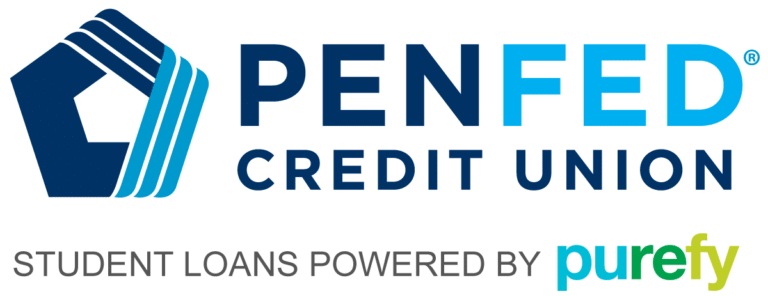
4.5
Credible rating>

Credible lender ratings are evaluated by our editorial team with the help of our loan operations team. The rating criteria for lenders encompass 78 data points spanning interest rates, loan terms, eligibility requirement transparency, repayment options, fees, discounts, customer service, cosigner options, and more. Read our full methodology.





Rates and terms





Fees and Discounts





Customer Experience





PenFed Student Loan Refinancing

Fixed APR

Lowest fixed rate available from this lender
2.89%+

Variable APR

Lowest variable rate available from this lenderN/A

Min. credit score

Minimum credit score needed to qualify670

Loan amount

Range needed to refinance with this lender$7,500 to $300,000
Does refinancing make sense for you?
Compare offers from top refinancing lenders to determine your actual savings.
Check Personalized Rates>Checking rates won’t affect your credit scoreView DetailsFixed APR:
2.89%+Variable APR: N/AMin. credit score: 670Loan amount: $7,500 to $300,000Loan terms (years): 5, 8, 12, 15Repayment options: Does not discloseFees: NoneDiscounts: NoneEligibility: Must be a U.S. citizen and have and at least $7,500 in student loansCustomer service: Email, phone, chatSoft credit check: YesCosigner release: After 12 monthsLoan servicer: PenFedMax. Undergraduate Loan Balance: $300,000Max. Graduate Loan Balance: $300,000Offers Parent PLUS Refinancing: Yes
Pros
Spouses can refinance their student loans togetherCosigner release offered after 12 months of consecutive, on-time paymentsNo fees
Cons
No discounts offered$42,000 to $50,000 minimum income requirement (depending on loan amount)Must have bachelor’s degree or higher
Learn More: 4 Credit Unions for Student Loan Refinancing
RISLA
Best for: Borrowers looking for income-based repayment options
Most private student loans don’t offer the repayment options that federal student loans do. However, the Rhode Island Student Loan Authority (RISLA) offers an income-based repayment (IBR) plan to borrowers facing financial hardship. Like the federal IBR plan, your payments will be 15% of your discretionary income, and RISLA will forgive any remaining balance after 25 years.
With RISLA, you can refinance loan amounts from $7,500 to $250,000 (depending on the highest degree you’ve earned) with terms from five to 15 years.

3.7
Credible rating>

Credible lender ratings are evaluated by our editorial team with the help of our loan operations team. The rating criteria for lenders encompass 78 data points spanning interest rates, loan terms, eligibility requirement transparency, repayment options, fees, discounts, customer service, cosigner options, and more. Read our full methodology.





Rates and terms





Fees and Discounts





Customer Experience





RISLA Student Loan Refinancing

Fixed APR

Lowest fixed rate available from this lender
3.29%+

Variable APR

Lowest variable rate available from this lenderN/A

Min. credit score

Minimum credit score needed to qualify680

Loan amount

Range needed to refinance with this lender$7,500 to $250,000
Does refinancing make sense for you?
Compare offers from top refinancing lenders to determine your actual savings.
Check Personalized Rates>Checking rates won’t affect your credit scoreView DetailsFixed APR:
3.29%+Variable APR: N/AMin. credit score: 680Loan amount: $7,500 to $250,000Loan terms (years): 5, 10, 15Repayment options: Academic deferment, military deferment, forbearance, loans discharged upon death or disabilityFees: NoneDiscounts: AutopayEligibility: Available in all 50 states; must also have at least $7,500 in student loans and a minimum income of $40,000Customer service: Email, phoneSoft credit check: Does not discloseCosigner release: NoLoan servicer: Rhode Island Student Loan AuthorityMax. Undergraduate Loan Balance: $150,000 – $249,000Max. Graduate Loan Balance: $200,000 – $249,000Offers Parent PLUS Refinancing: Yes
Pros
Offers an income-based repayment plan to borrowers facing financial hardshipCan defer payments for up to 36 months if you return to graduate schoolDegree not required
Cons
Variable rates not offered$40,000 minimum income requirementCosigner release not offered
SoFi
Best for: Borrower perks
With SoFi, you can refinance loan amounts starting at $5,000 up to the full balance of your qualified education loans with terms from five to 20 years.
Additionally, SoFi borrowers have access to several perks, such as unemployment protection, career coaching, and investing advice.

4.5
Credible rating>

Credible lender ratings are evaluated by our editorial team with the help of our loan operations team. The rating criteria for lenders encompass 78 data points spanning interest rates, loan terms, eligibility requirement transparency, repayment options, fees, discounts, customer service, cosigner options, and more. Read our full methodology.





Rates and terms





Fees and Discounts





Customer Experience





SoFi Student Loan Refinancing

Fixed APR

Lowest fixed rate available from this lender
2.49%+6

Variable APR

Lowest variable rate available from this lender
2.25%+6

Min. credit score

Minimum credit score needed to qualifyDoes not disclose

Loan amount

Range needed to refinance with this lender$5,000 up to the full balance
Does refinancing make sense for you?
Compare offers from top refinancing lenders to determine your actual savings.
Check Personalized Rates>Checking rates won’t affect your credit scoreView DetailsFixed APR:
2.49%+6Variable APR:
2.25%+6Min. credit score: Does not discloseLoan amount: $5,000 up to the full balanceLoan terms (years): 5, 7, 10, 15, 20Repayment options: Academic deferment, military defermentFees: NoneDiscounts: Autopay, loyaltyEligibility: Available in all 50 statesCustomer service: Email, phone, chatSoft credit check: YesCosigner release: NoMax undergraduate loan balance: No maximumMax graduate loan balance: No maximumOffers Parent PLUS refinancing: Yes
Pros
0.25% autopay discountMight be able to refinance the full balance of your qualified education loansBorrower perks, such as unemployment protection and investing advice
Cons
Doesn’t disclose minimum credit requirementsDoesn’t offer cosigner releaseMust have earned an associate degree or higher from a Title IV school
Check Out: How to Get Student Loan Repayment Help
Methodology
To find the “best companies,” Credible looked at loan and lender data points from 12 categories to give you a well-rounded perspective on each of our partner refinancing lenders.
Here’s what we considered:
Interest ratesRepayment termsRepayment optionsFeesDiscountsCustomer service availabilityMaximum loan balancesWillingness to refinance parent loansEligibility criteriaCosigner release optionsWhether the minimum credit score is available publiclyWhether consumers could request rates with a soft credit check
Our hope is that this will be a win-win situation for you and us — we only want to get paid if you find a loan that works for you, not by selling your data. This means Credible will only get paid by the lender if you finish the refinancing process and a loan is disbursed. Additionally, Credible charges you no fees of any kind to compare your refinancing options.
Other student loan refinancing lenders to consider
Here are more student loan refinancing companies we evaluated. Keep in mind that these lenders are not offered through Credible, so you won’t be able to easily compare your rates with them on the Credible platform like you can our partner lenders.
LenderLoan terms (years)Max loan balance

Credible Rating>

Credible lender ratings are evaluated by our editorial team with the help of our loan operations team. The rating criteria for lenders encompass 78 data points spanning interest rates, loan terms, eligibility requirement transparency, repayment options, fees, discounts, customer service, cosigner options, and more. Read our full methodology.





View details>10, 20Undergrad: $249,000
Grad: $199,000Min. credit score:
Does not discloseLoan amount:
Up to $250,000Loan terms (years):
10, 20Repayment options:
Academic deferment, military deferment, forbearance, loans discharged upon death or disabilityFees:
NoneDiscounts:
AutopayEligibility:
Available in all 50 statesCustomer service:
Email, phoneSoft credit check:
Does not discloseCosigner release:
NoMax. undergraduate Loan Balance:
$150,000 to $249,000Max. graduate Loan Balance:
$150,000 to $199,000Offers Parent PLUS Refinancing:
No

Credible Rating>

Credible lender ratings are evaluated by our editorial team with the help of our loan operations team. The rating criteria for lenders encompass 78 data points spanning interest rates, loan terms, eligibility requirement transparency, repayment options, fees, discounts, customer service, cosigner options, and more. Read our full methodology.





View details>5, 7, 10, 15Undergrad: $500,000
Grad: $500,000Rates:
fixed, variableMin. credit score:
Does not disclose Loan amount:
$60,000 to $350,000Cosigner release:
NoLoan terms (years):
5, 7, 10, 15, 20Fees:
NoneDiscounts:
Autopay, loyaltyEligibility:
Available in CA, CT, FL, MA, NY, OR, WYCustomer service:
Email, phoneSoft credit check:
YesMax. undergraduate loan balance:
$500,000Max. graduate loan balance:
$500,000

Credible Rating>

Credible lender ratings are evaluated by our editorial team with the help of our loan operations team. The rating criteria for lenders encompass 78 data points spanning interest rates, loan terms, eligibility requirement transparency, repayment options, fees, discounts, customer service, cosigner options, and more. Read our full methodology.





View details>10, 15, 20Undergrad: $249,000
Grad: $249,000Rates:
Fixed, variableMin. credit score:
Does not discloseLoan amount:
$10,000 to $250,000Cosigner release:
After 24 to 36 monthsLoan terms (years):
10, 15, 20Repayment options:
Military deferment, forbearanceFees:
Late feeDiscounts:
AutopayEligibility:
Available in all 50 statesCustomer service:
Email, phone, chatSoft credit check:
YesLoan servicer:
Student Loan Finance CorporationMax. undergraduate Loan Balance:
$150,000 to $249,000Max. graduate Loan Balance:
$200,000 to $249,000Offers Parent PLUS Refinancing:
Yes

Credible Rating>

Credible lender ratings are evaluated by our editorial team with the help of our loan operations team. The rating criteria for lenders encompass 78 data points spanning interest rates, loan terms, eligibility requirement transparency, repayment options, fees, discounts, customer service, cosigner options, and more. Read our full methodology.





View details>5, 7, 10, 15Undergrad: None
Grad: NoneMin. credit score:
Does not discloseLoan amount:
$5,000 to $300,000Cosigner release:
Does not discloseLoan terms (years):
5, 7, 10, 15Repayment options:
Immediate repayment, forbearance, loans discharged upon death or disabilityFees:
Late feeDiscounts:
AutopayEligibility:
Available in all 50 statesCustomer service:
Email, phoneSoft credit check:
YesMax. undergraduate Loan Balance:
No maximumMax. graduate Loan Balance:
No maximumOffers Parent PLUS Refinancing:
Yes

Credible Rating>

Credible lender ratings are evaluated by our editorial team with the help of our loan operations team. The rating criteria for lenders encompass 78 data points spanning interest rates, loan terms, eligibility requirement transparency, repayment options, fees, discounts, customer service, cosigner options, and more. Read our full methodology.





View details>5, 7, 10, 15, 20Does not discloseRates:
Fixed, variableMin. credit score:
Does not discloseLoan amount:
$5,000 to $300,000Cosigner release:
YesLoan terms (years):
5, 7, 10, 15, 20Repayment options:
Does not discloseFees:
NoneDiscounts:
AutopayEligibility:
Does not discloseCustomer service:
Email, phoneSoft credit check:
YesLoan servicer:
LendKey Technologies Inc.Max. undergraduate Loan Balance:
Does not discloseMax. graduate Loan Balance:
Does not discloseOffers Parent PLUS Refinancing:
No
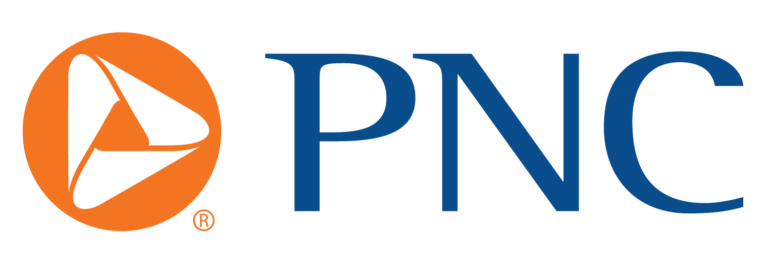
Credible Rating>

Credible lender ratings are evaluated by our editorial team with the help of our loan operations team. The rating criteria for lenders encompass 78 data points spanning interest rates, loan terms, eligibility requirement transparency, repayment options, fees, discounts, customer service, cosigner options, and more. Read our full methodology.





View details>5, 10, 15Undergrad: $99,000
Grad: $150,000Min. credit score:
Does not discloseLoan amount:
Less than $150,000Loan terms (years):
5, 10, 15Repayment options:
Academic deferment, military deferment, forbearance, loans discharged upon death or disabilityFees:
Does not discloseDiscounts:
AutopayEligibility:
Available in all 50 statesCustomer service:
Email, phoneSoft credit check:
Does not discloseCosigner release:
YesMax. Undergraduate Loan Balance:
Less than $99,000Max. graduate Loan Balance:
Less than $150,000Offers Parent PLUS Refinancing:
Yes
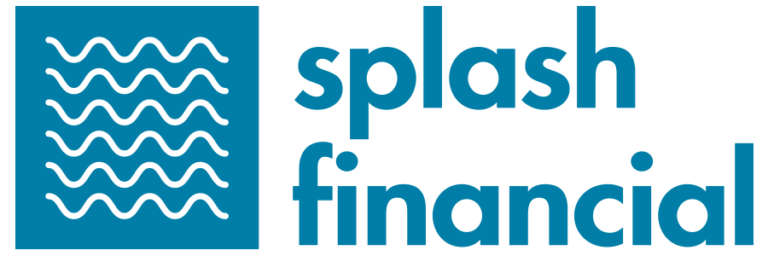
Credible Rating>

Credible lender ratings are evaluated by our editorial team with the help of our loan operations team. The rating criteria for lenders encompass 78 data points spanning interest rates, loan terms, eligibility requirement transparency, repayment options, fees, discounts, customer service, cosigner options, and more. Read our full methodology.





View details>Does not discloseUndergrad: None
Grad: NoneMin. credit score:
Does not discloseLoan amount:
No maximumLoan terms:
Does not discloseRepayment options:
Academic deferment, forbearanceFees:
Late feeDiscounts:
AutopayEligibility:
Available in all 50 statesCustomer service:
Email, phone, chatSoft credit check:
YesCosigner release:
YesMax. undergraduate Loan Balance:
No maximumMax. graduate Loan Balance:
No maximumOffers Parent PLUS Refinancing:
YesThe lenders in this table aren’t our partners. But you can use Credible to compare rates in 2 minutes from other lenders who offer student loan refinancing.
Compare Now
How to refinance student loans without a cosigner
If you’re ready to refinance your student loans without a cosigner, follow these four steps:
Check your credit. When you apply for refinancing, the lender will evaluate your credit to determine your creditworthiness — so it’s a good idea to check your credit beforehand to see where you stand. You can use a site like AnnualCreditReport.com to review your credit reports for free. If you find any errors, dispute them with the appropriate credit bureaus to potentially boost your credit score.Compare lenders and pick a loan option. Be sure to shop around and compare as many student loan refinance companies as you can to find the right loan for you. Consider not only interest rates but also repayment terms, any fees charged by the lender, and eligibility requirements. After you’ve done your research, pick the loan option that works best for your needs.Complete the application. Once you’ve chosen a lender, you’ll need to fill out a full application and submit any required documentation, such as tax returns or pay stubs. Also be prepared to provide information regarding the loans you want to refinance.Manage your payments. If you’re approved, continue making payments on your old loans while the refinance is processed. Afterward, you could consider signing up for autopay so you won’t miss any payments in the future — many lenders offer a rate discount to borrowers who opt for automatic payments.Keep in mind: While you can refinance both federal and private loans, refinancing federal student loans will cost you access to federal benefits and protections — such as income-driven repayment plans and student loan forgiveness programs.
Depending on your credit, you might qualify for a lower interest rate through refinancing. This means you could save money on interest and potentially pay off your loan faster. You can use our calculator below to see how much you can save by refinancing your student loans.
Step 1. Enter your loan balance
Loan balanceEnter the remaining amount of the loans you’d like to refinance
Step 2. Enter current loan information
Interest rateEnter the average annual interest rate of the loans you’d like to refinanceMonthly paymentEnter the monthly amount you currently pay on your loans (or enter remaining term)Remaining termEnter the amount of time left to repay your loan (or enter monthly payment)years
Step 3. Enter your new loan information to start calculating your savings
Interest rateEnter an estimated new interest rate.Monthly paymentEnter the monthly amount to pay on your new loan (or enter new loan term)New loan termEnter the amount of time you have to repay your loan (or enter monthly payment)yearsLifetime SavingsIncreased Lifetime Cost
New Monthly Payment>Monthly SavingsIncreased Monthly Cost
If you refinance your student loan at>
interest rate, you>can savewill pay an additional
monthly and pay off your loan by>.
The total cost of the new loan will be>.
Does refinancing make sense for you?
Compare offers from top refinancing lenders to determine your actual savings.
Check Personalized Rates
Checking rates won’t affect your credit score.
Check Out: Student Loan Repayment Calculator: Estimate Your Payoff Date
Pros of not using a cosigner when refinancing
Refinancing without a cosigner could be the right option for some borrowers, but it isn’t right for everyone. Here are a few potential benefits to keep in mind:
No need to find one: In some cases, borrowers might not know anyone with good enough credit to act as a cosigner. If you refinance without a cosigner, you won’t need to worry about this.No risk to your relationships: A cosigner shares responsibility for the loan — which means they’re on the hook if you can’t make your payments. If this happens, it could severely strain your relationship with your cosigner. By refinancing without a cosigner, you won’t risk potentially alienating any friends or family members.Only you are responsible for the loan: Without a cosigner, you’re the only one responsible for your refinanced loan. This means you can focus on repaying your loan without worrying about negatively affecting a cosigner along the way — which might feel financially empowering for some.
Learn More: When Student Loan Refi Is a Good Idea and When to Reconsider
Cons of not using a cosigner when refinancing
Could be hard to qualify on your own: If you have less-than-perfect credit, you might have a hard time getting approved for refinancing without a cosigner.Might not get the best rates: Even if you don’t need a cosigner to get approved, having one could get you a lower rate than you’d get on your own. Unless you have excellent credit, you might not qualify for the lowest rates advertised by lenders without a cosigner.Less motivation to stay on top of your payments: Some borrowers might need the extra motivation of having a cosigner to make on-time payments.
Check Out: Should I Pay Off My Student Loans or Invest in Stocks?
How cosigner release works
Some lenders offer a cosigner release option — so if you already have a cosigner, you might be able to remove them from the loan after meeting the requirements. Generally, you’ll have to make consecutive, on-time payments for a certain period of time and also meet the underwriting criteria on your own to qualify for cosigner release.
Here are Credible’s partner lenders that offer cosigner release:
Advantage After 36 monthsCitizensAfter 36 monthsCollege AveAfter 24 monthsCommonBond After 36 monthsEDvestinUAfter 36 monthsINvestEd After 48 months of on-time paymentsISL Education LendingAfter 24 monthsPenFed After 12 months
Learn More: How to Pay off Student Loans in 10 Years or Less
Frequently asked questions about refinancing without a cosigner
Here are the answers to a few commonly asked questions about refinancing without a cosigner:
Can you consolidate student loans without a cosigner?
Yes, you can consolidate student loans without a cosigner. Keep in mind that the terms consolidation and refinancing are often used interchangeably, but they mean something different for federal and private student loans.
Federal student loan consolidation: You can consolidate federal student loans into a Direct Consolidation Loan. While this won’t change your interest rate, you can extend your repayment term up to 30 years to reduce your monthly payments — though remember that you’ll pay more interest over time. Unlike with refinancing, you don’t need good credit to federally consolidate your loans, and you don’t need to worry about having a cosigner. You also won’t lose access to your federal benefits.Private student loan refinancing: Also known as private student loan consolidation, this process lets you combine multiple student loans — leaving you with one loan and payment to manage. Depending on your credit, you might qualify for a better interest rate, which can save you money on your overall loan cost. Or you could opt to extend your repayment term to lower your monthly student loan payments. Keep in mind that if you refinance federal loans, you’ll no longer have access to federal protections.
Check Out: How to Consolidate Your Student Loans
What do I do if I can’t get approved for a student loan?
If you can’t get approved for a student loan without a cosigner, you have a couple of options:
Improve your credit. If you can wait to refinance, spend some time building your credit first. There are several ways to potentially do this, such as making on-time payments on all of your bills, paying down credit card balances, or becoming an authorized user on the credit card account of someone you trust.Apply with a cosigner. If there’s no way for you to get approved on your own, you might need to refinance with a cosigner. Keep in mind that a cosigner can be anyone with good credit — such as a parent, other relative, or trusted friend — who is willing to share responsibility for the loan. Also remember that you might be able to remove your cosigner from the loan later on if you qualify for cosigner release.
Learn More: Fixed or Variable Student Loan: Which is Right for You?
Can a cosigner be removed from a student loan?
Yes, there are two ways a cosigner can be removed from a loan:
Cosigner release: Several lenders provide a cosigner release option. This means you could have your cosigner removed from the loan after meeting certain conditions — in general, you’ll need to make consecutive, on-time payments for a specific period of time and meet the underwriting criteria on your own.Refinancing again: You can also remove a cosigner by refinancing your student loan again.
Check Out: How Long It Takes to Pay Off Student Loans
How much does it cost to refinance student loans?
There’s no upfront cost to refinance your student loans. However, keep in mind that you’ll need to pay any interest that accrues on the loan as well as any fees charged by the lender, such as late fees.
Tip: If you want to keep your repayment costs low, it’s a good idea to choose the shortest repayment term you can afford. This way, you’ll pay less in interest over time.
If you decide to refinance your student loans, remember to consider as many lenders as possible to find the right loan for you. Credible makes this easy: You can compare your prequalified rates from multiple lenders in two minutes — without affecting your credit.
Find out if refinancing is right for you
Compare actual rates, not ballpark estimates – Unlock rates from multiple lenders in about 2 minutesWon’t impact credit score – Checking rates on Credible won’t impact your credit scoreData privacy – We don’t sell your information, so you won’t get calls or emails from multiple lendersSee Your Refinancing Options
Credible is 100% free!
Trustpilot
The post 13 Best Loans for Refinancing Student Loans Without a Cosigner appeared first on Credible.









